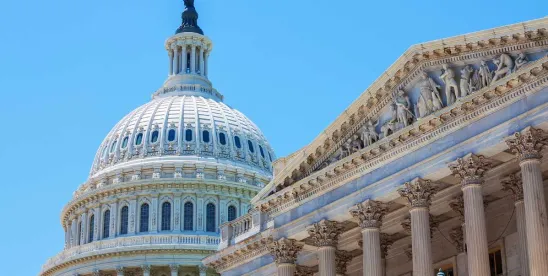How long can the government keep your property after lawfully seizing it? According to the D.C. Circuit in a recent decision, as long as the continued possession is still reasonable under the Fourth Amendment. This decision furthers a split among circuit courts and portends how the text, history, and tradition method might influence Fourth Amendment cases.
Asinor v. District of Columbia
Asinor v. District of Columbia, No. 22-7129, — F.4th —-, 2024 WL 3733171 (D.C. Cir. Aug. 9, 2024) involved several consolidated appeals raising the question above. The facts were straightforward: After arresting and releasing plaintiffs without charges, the District of Columbia refused to return their personal property (including cell phones) for months or years. The arrests and initial property seizures were reasonable under the Fourth Amendment. The only dispute was whether the district’s retention of personal property also had to be reasonable. If the Fourth Amendment “speaks only to … the initial moment of seizure,” then the district would prevail. But if the Fourth Amendment applies to “the entire period during which the property has been seized[,]” the plaintiff-appellants would win.
Ultimately, the Asinor court unanimously held that “[w]hen the government seizes property incident to a lawful arrest, the Fourth Amendment requires that any continued possession of the property must be reasonable.”
The Court’s Method: Text, History, and Tradition
To reach its holding, the court first addressed the Fourth Amendment’s “bare text,” which it determined did not definitively answer whether the reasonableness requirement applied beyond initial property seizures.
When text runs out, “the historical approach examines the laws, practices, and understandings from before and after ratification that may help the interpreter discern the meaning of the constitutional text and the principles embodied in that text.” U.S. v. Rahimi, 602 U.S. —-, 144 S. Ct. 1889, 1912–13 (2024) (Kavanaugh, J., concurring). Applying this approach, the Asinor court explained that “the Fourth Amendment protects possessory interests against government infringement in the same way that Founding-era common law protected possessory interests against private infringement. And the common law authorized actions for damages and recovery of property that was lawfully taken, but then unlawfully possessed.” If a state had seized property, then the court might have considered an 1868 understanding of the Fourth Amendment to account for its incorporation. See N.Y. State Rifle & Pistol Ass’n, Inc. v. Bruen, 597 U.S. 1, 37–38 (2022)). But the Asinor the court’s conclusion arose solely from Sir William Blackstone’s Commentaries on the Laws of England, which distilled pre-existing rights secured by the Fourth Amendment.
In addition to history, recent Supreme Court doctrine considers “tradition” when interpretating at least certain Constitutional provisions. Tradition includes “[p]ost-ratification interpretations and applications by government actors [that]—at least when reasonably consistent and longstanding—can be probative of the meaning of vague constitutional text.” Rahimi, 144 S. Ct. at 1916 (Kavanaugh, J., concurring). Part of considering “tradition,” however, also involves using text and history to (1) “broadly or narrowly to read a precedent,” (2) “extend, limit, or narrow a precedent,” or (3) or “overrule a precedent[.]” Id. at 1920.
Skipping over post-ratification-era tradition, however, the Asinor court instead considered modern Fourth Amendment doctrine regarding seizure of property and persons. Starting with property, the court latched on to a footnote from a 1980s-era U.S. Supreme Court decision that observed seizure could become “unreasonable [if] its length unduly intruded upon constitutionally protected interests” (U.S. v. Jacobsen, 466 U.S. 109, 124 n.5 (1984)). Though Jacobsen involved destruction of seized narcotics, the D.C. Circuit emphasized that many Asinor plaintiffs could not access their cell phones for about a year, which caused considerable inconvenience and financial harm. Modern Fourth Amendment doctrine respecting seizure of individuals confirmed the reasonableness requirement for continued property deprivation. That is because “[w]hen a person is seized, the Fourth Amendment requires reasonableness not only at the moment of arrest, but also for the seizure’s entire duration.” And the court saw “no textual, historical, or other reason to say that the Fourth Amendment protects against the government’s prolonged seizure of persons but not its prolonged seizure of effects.”
Wrapping up its analysis, the court refused to consider due-process and Takings Clause arguments under the Fifth Amendment because (1) it preferred the Fourth Amendment’s “‘explicit textual source of constitutional protection against a particular sort of government behavior’ to the more amorphous standards of ‘substantive due process[,]’” and (2) it was “unclear whether the government’s continued retention of lawfully seized property would constitute an unconstitutional taking.”
A Circuit Split Expands
The Asinor decision creates a 5-2 (or possibly 5-3) circuit split. As noted by Judge Karen LeCraft Henderson’s concurrence, the “the First, Second, Sixth, Seventh and Eleventh [Circuits] have held in precedential opinions that the Fourth Amendment does not support a claim for the government’s retention of legally seized property.” See Denault v. Ahern, 857 F.3d 76, 84 (1st Cir. 2017); Shaul v. Cherry Valley-Springfield Cent. Sch. Dist., 363 F.3d 177, 187 (2d Cir. 2004); Fox v. Van Oosterum, 176 F.3d 342, 351 (6th Cir. 1999); Lee v. City of Chicago, 330 F.3d 456, 466 (7th Cir. 2003); and Case v. Eslinger, 555 F.3d 1317, 1330 (11th Cir. 2009).
On the other side of the ledger, the Ninth Circuit (and possibly Fourth) agrees with the D.C. Circuit that the Fourth Amendment does apply a reasonableness standard to retained property. See Brewster v. Beck, 859 F.3d 1194, 1196–98 (9th Cir. 2017); and Mom’s Inc. v. Willman, 109 F. App’x 629, 637 (4th Cir. 2004) (unpublished). Judge Henderson, however, emphasized that the First, Second, and Eleventh Circuits “gave the issue … short shrift[,]” by not discussing “relevant Supreme Court precedent or competing definitions of “seizure.” She then took the Sixth and Seventh circuits to task for “focus[ing] on the wrong Supreme Court precedent” by not considering U.S. v. Jacobson.
The Fourth Amendment and “Text, History, and Tradition”
Apart from the merits, Asinor reflects a trend amongst intermediate federal appellate courts regarding the “text, history, and tradition” method. That method arises out of Second Amendment jurisprudence, most recently in Bruen, 597 U.S. at 1. It is an alternative to the familiar tiers-of-scrutiny approach that determines whether the government or state has violated rights secured by the Federal Constitution. Under that interest-balancing method, courts weigh a party’s injuries against the government or state’s interest(s) to assess whether the Federal Constitution prohibits the challenged action. By contrast, the text, history, and tradition method forgoes interest balancing in favor of an approach that focuses on objective, historical indicia.
As in Asinor, intermediate federal appellate courts have begun hewing to text, history, and tradition when evaluating Fourth Amendment issues. For example, in Mitchell v. Doherty the Seventh Circuit “consider[ed] the traditional interpretive tools: text, history, tradition, and guidance from caselaw” when “assessing the constitutionally required timing of a bail hearing under the Fourth Amendment” (37 F.4th 1277, 1286 (7th Cir. 2022)). In Mexican Gulf Fishing Co. v. U.S. Dep’t of Com., the Fifth Circuit explained that “[t]he legitimacy of any categorical exception to [the Fourth] Amendment rests … on the exception’s accordance with constitutional text, history, and tradition—as interpreted and explained by our highest Court” (60 F.4th 956, 970 (5th Cir. 2023)). And in Crocker v. Beatty, Judge Kevin Newsom admonished “those looking for [the original meaning of “seizures”] … to attend closely to text, history, and tradition” (995 F.3d 1232, 1258 n.7 (11th Cir. 2021) (Newsom, J., concurring)). Judge Patrick Bumatay of the Ninth Circuit has advocated this same approach in dissent. See Verdun v. City of San Deigo, 51 F.4th 1033, 1051 (9th Cir. 2022) (Bumatay, J., dissenting).
Takeaways
Asinor furthers a deep split among federal courts over whether the Fourth Amendment requires the retention of seized property to be reasonable. Property owners have the upper hand in the D.C., Ninth, and possibly Fourth Circuits. But they face an uphill battle making post-seizure reasonableness challenges in the First, Second, Sixth, Seventh, and Eleventh Circuits.
Asinor also reveals that the text, history, and tradition methodology is trending in Fourth Amendment jurisprudence. While precedent will continue to bind, how courts interpret precedent may substantially change if they focus more closely on text, history, and tradition. Only time will tell. But criminal defendants and Fourth Amendment plaintiffs would be well advised to tailor their strategy and briefing to account for this ascendant approach. They ignore text, history, and tradition at their peril.




 />i
/>i

